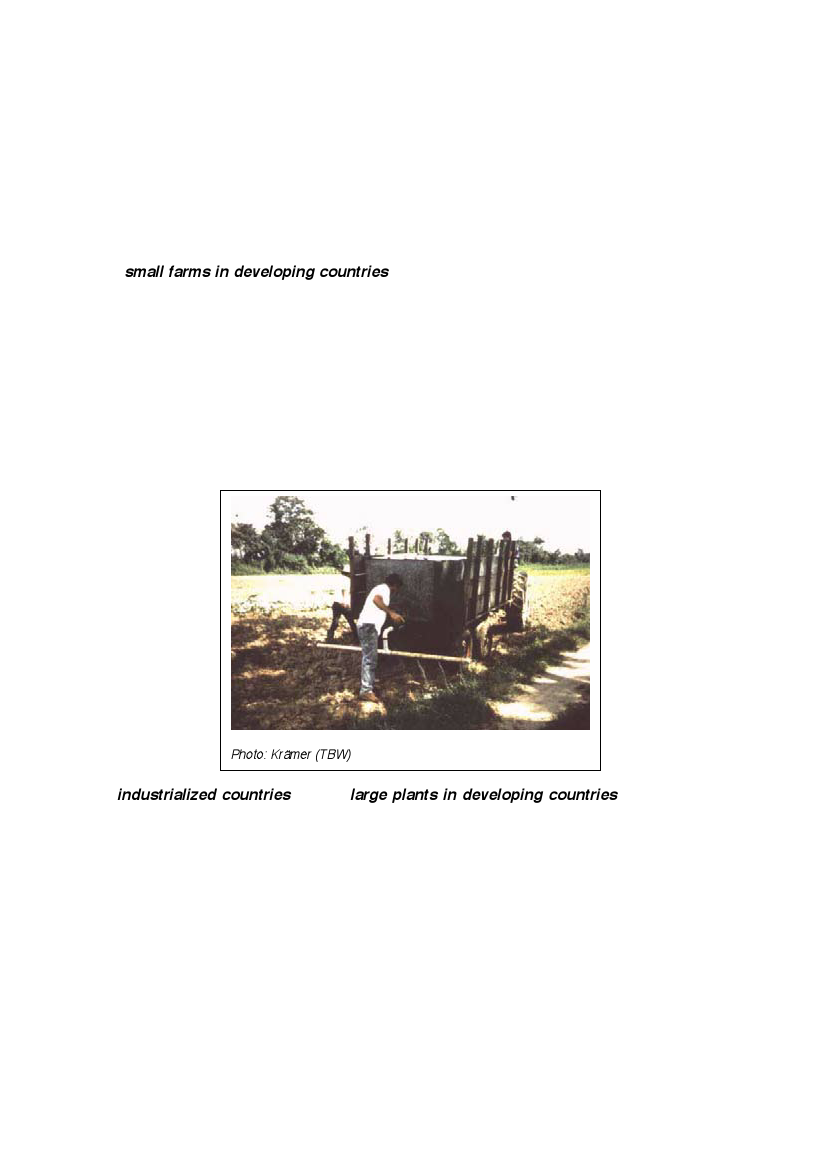
Slurry-Use Equipment
For the use of biogas slurry, a multitude of tools and technologies have been developed.
They differ mainly according to the quantities of digested material. Big differences exist as
well between developing and industrialized countries, depending on the technological
development and the cost of labor. Slurry use technologies range from hand-application with
the help of a bucket to mechanized distribution, supported by GPS (global positioning
system) and a computer on board of the liquid manure spreader. The choice of technology
essentially depends on the amount of slurry and the area to be fertilized as well as on the
financial means and the opportunity cost of labor.
On small farms in developing countries, simple but effective tools are used. They include
buckets, scoops, containers with straps, wooden wheelbarrows with lids, barrels on wheels
and others. These tools allow a precise application of slurry. The most economic way to
apply slurry is by means of gravity, either by a network of small slurry furrows or by mixing
slurry in the irrigation system. Both options require a gradient of at least 1% (for irrigation
water) and 2% (for slurry distribution), sloping from the biogas plant’s overflow point to the
fields.
Making best and least labor-intensive use of the slurry is an important planning parameter.
Especially where gravity distribution is feasible, the positioning of the biogas plant and the
expansion chamber and the level of the expansion chamber overflow are of high importance.
In rather flat areas, it should be considered to raise both the stable and the biogas-plant in
order to allow a slurry distribution by gravity.
Figure 39: Device for slurry distribution by tractor.
Photo: Krämer (TBW)
In industrialized countries and for large plants in developing countries two methods of
mechanized distribution systems have evolved:
Distribution via piping systems
The slurry is pumped directly from the slurry storage tank onto the field and is distributed
there. If the pump is rather small and the pressure and transported amounts are low, the
distribution can be done by hand. With increasing pressure and transported amounts, the
distribution system is attached to a tractor. The tractor does not have to be very powerful as
there is no need to pull a heavy tanker. The main advantage of this method is the low ground
pressure and the ability to enter into fields of steep slope, of fragile soil structure and during
bad weather.
The biogas slurry, if it is not too viscous, can be applied with a liquid manure rainer. The
disadvantages are the costly pump and the expensive piping system. Therefore, this method
is only economic for fields close to the slurry storage container.
59